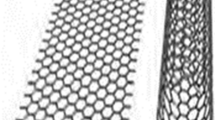Abstract
The development of new chemical and biochemical sensing schemes has been a topic of growing interest. Simplicity of preparation and mild processing conditions have made sol-gel-derived composites attractive for many chemical sensing schemes. A portion of our research centers on using sol-gel-processed materials for the development of selective sensors. Over the years we have aimed to characterize the analytical performance of these types of sol-gel-based sensing platforms. In the course of this work we recently discovered that the time (prior to casting) when the sensing chemistry is actually doped into the sol-gel processing solution plays a critical role in a given sensor's analytical performance. In this paper we report on the effects of doping time on the behavior of a model organic dopant (pyrene) sequestered within sol-gel-derived microfiber tips and films. We use O2 as the analyte and determine the sensor sensitivity and temporal response as a function of doping time. We also quantify the local dipolarity of the immediate environment surrounding the average pyrene molecule as a function of doping time.
Similar content being viewed by others
References
O.S. Wolfbeis, Fiber Optic Chemical Sensors and Biosensors (CRC Press, Boca Raton, 1991), vols. 1 and 2.
R.B. Thompson, Topics in Fluorescence Spectroscopy: Probe Design and Chemical Sensing, edited by J.R. Lakowicz (Plenum Press, New York, 1994), chapt. 7, vol. 4.
R.F. Taylor, Protein Immobilization: Fundamentals and Applications (Marcell Dekker, New York, 1991), chapt. 8.
A.M. Buckley and M. Greenblatt, J. Chem. Ed. 71, 599 (1994).
L.L. Hench and J.K. West, Chem. Rev. 90, 33 (1990).
C.J. Brinker and G.W. Scherer, Sol-Gel Science (Academic Press, New York, 1989).
B.C. Dave, B. Dunn, J.S. Valentine, and J.I. Zink, Anal. Chem. 66, 1120A (1994).
R. Wang, U. Narang, P.N. Prasad, and F.V. Bright, Anal. Chem. 65, 2671 (1993).
J.D. Jordan, R.A. Dunbar, and F.V. Bright, Anal. Chim. Acta 332, 83 (1996).
D. Avnir, S. Braun, O. Lev, and M. Ottolenghi, Chem. Mater. 6, 1605 (1994).
U. Narang, M.H. Rahman, J.H. Wang, P.N. Prasad, and F.V. Bright, Anal. Chem. 67, 1935 (1995).
U. Narang, P.N. Prasad, F.V. Bright, K. Ramanathan, N.D. Kumar, B.D. Malhotra, M.N. Kamalasanan, and S. Chandra, Anal. Chem. 66, 3139 (1994).
U. Narang, J.D. Jordan, F.V. Bright, and P.N. Prasad, J. Phys. Chem. 98, 8101 (1994).
U. Narang, R. Wang, P.N. Prasad, and F.V. Bright, J. Phys. Chem. 98, 17 (1994).
J.D. Jordan, R.A. Dunbar, and F.V. Bright, Anal. Chem. 67, 2436 (1995).
R.A. Dunbar, J.D. Jordan, and F.V. Bright, Anal. Chem. 68, 604 (1996).
U. Narang, R. Gvishi, F.V. Bright, and P.N. Prasad, J. Sol-Gel Sci. Tech. 6, 113 (1996).
C.M. Ingersoll and F.V. Bright, CHEMTECH 27, 26 (1997).
H.-Y. Liu, S.C. Switalski, B.K. Coltrain, and P.B. Merkel, Appl. Spectrosc. 46, 1266 (1992).
C. McDonagh, F. Sheridan, T. Butler, and B.D. MacCraith, J. Non-Crystl. Solids 194, 72 (1996).
A.K. McEvoy, C. McDonagh, and B.D. MacCraith, J. Sol-Gel Sci. Technol. 8, 1121 (1997).
J.B. Birks, Photophysics of Aromatic Molecules (Wiley-Interscience, New York, 1970).
A. Nakajima, Bull. Chem. Soc. Jpn. 44, 3272 (1971).
D.C. Dong and M.A. Winnik, Photochem. Photobiol. 35, 17 (1982).
J. Samuel, Y. Polevaya, M. Ottolenghi, and D. Avnir, Chem. Mater. 6, 1457 (1994).
J.R. Lakowicz, Principles of Fluorescence Spectroscopy (Plenum Press, New York, 1991), chapt. 9.
V.R. Kaufman and D. Avnir, Langmuir 2, 717 (1986).
T. Yamanaka, Y. Takahashi, T. Kitamura, and K. Uchida, Chem. Phys. Lett. 172, 29 (1990).
J.D. Ingle and S.R. Crouch, Spectrochemical Analysis (Prentice Hall, New Jersey, 1988).
A. Messica, A. Greenstein, and A. Katzir, Appl. Opt. 35, 2274 (1996).
M.R. Eftink, Topics in Fluorescence Spectroscopy: Principles, edited by J.R. Lakowicz (Plenum Press, New York, 1991), chapt. 2, vol. 2.
Author information
Authors and Affiliations
Rights and permissions
About this article
Cite this article
Ingersoll, C.M., Bright, F.V. Toward Sol-Gel-Processed Chemical Sensing Platforms: Effects of Dopant Addition Time on Sensor Performance. Journal of Sol-Gel Science and Technology 11, 169–176 (1998). https://doi.org/10.1023/A:1008697514873
Issue Date:
DOI: https://doi.org/10.1023/A:1008697514873




